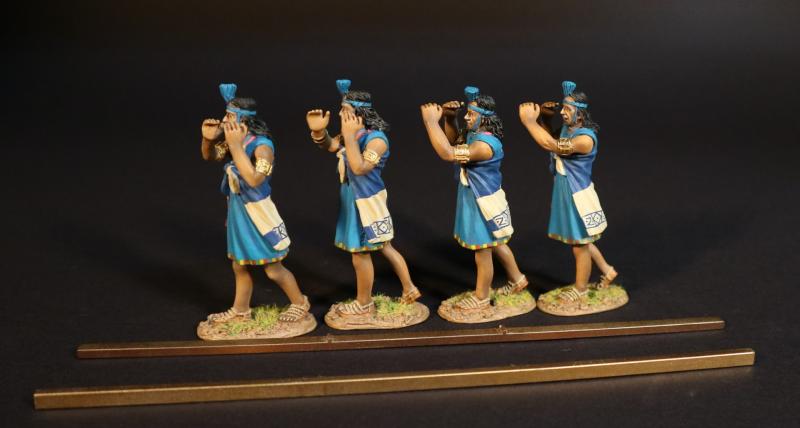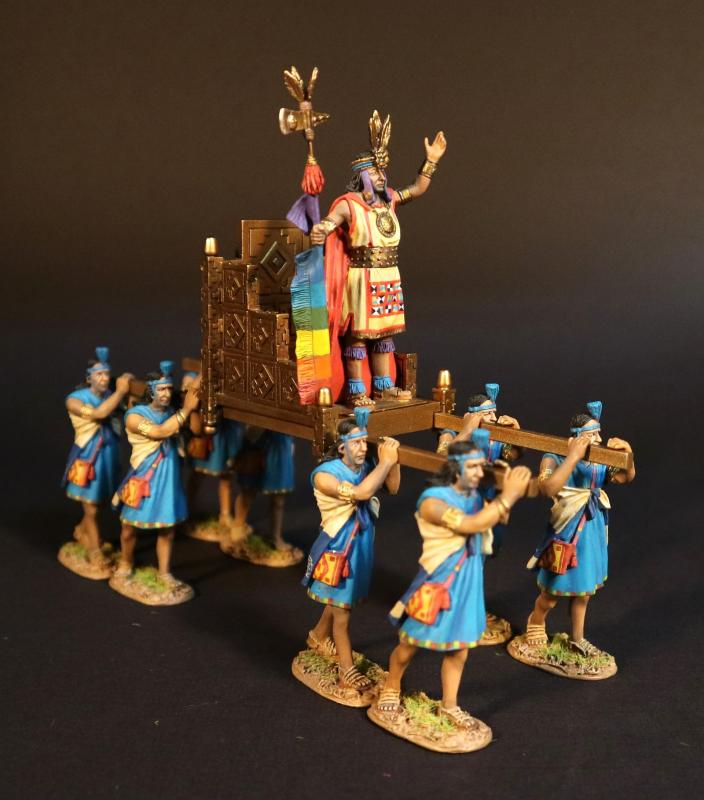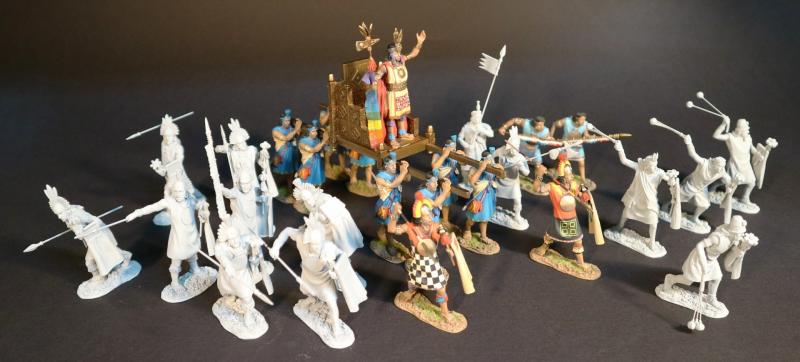Inca Litter Expansion Set, The Inca Empire, The Conquest of America--four figures and accessories
$188.00
Item Number: INCA-01A
Inca Litter Expansion Set, The Inca Empire, The Conquest of America
THE INCA LITTER
The Inca litter carried the commanding officers and the Sapa Inca. Traditionally it was carried by men from Callahuaya for short trips, and for longer distances by Lucana tribesmen of the provinces of Lucana and Sora, and they were known as the “feet of the Inca”. They were trained for this special role from the age of 20, and were usually uniformed in blue. Pictorial sources invariably show the litter born by just four men, but it is believed that this is just an illustrative convention, since text references mention eight or sometimes even as many as 20 bearers.
The litter was normally accompanied by replacement crews, with it being recorded as a total of as many as 200-300 Lucanas accompanying the Sapa Inca’s litter. Warriors from the Carabaya Tribe replaced the traditional Lucanas as the royal litter-bearers, after the Lucanas had deserted in the early stages of the Spanish conquest. They had defected to Pizarro’s side even before the conquistadores had entered Cuzco.
THE CONQUEST OF AMERICA
THE INCA EMPIRE
The Inca Empire was the largest empire in pre-Columbian America. The Inca civilization rose from the Peruvian highlands sometime in the early 13th Century. The administrative, political and military centre of the empire was in the city of Cusco. From 1438 to 1533, the Incas incorporated a large portion of western South America, centered on the Andean Mountains, using conquest and peaceful assimilation, among other methods. At its largest, the Empire joined modern day Peru, what is now western Equador, western and South central Bolivia, northwest Argentina, the southwest tip of Columbia, and a large portion of modern day Chile, into a state comparable to the historical empires of Eurasia. Its official language was Quechua.
The Spanish began the conquest of the Inca Empire in 1532, and by 1572, the last Inca state was fully conquered.
The Inca Empire was unique in that it lacked many of the features associated with civilization in the old world. The Incas were able to construct one of the greatest imperial states in human history without the use of the wheel, draft animals, knowledge of iron or steel, or even a system of writing. They were also capable of monumental architecture, especially the use of stonework, extensive road networks reaching all corners of the empire, finely woven textiles, use of knotted strings for record keeping and communication, agricultural innovations and production in a difficult environment, and the organization and management fostered or imposed on its people and their labour.
The Inca Empire functioned largely without money and without markets. Instead, exchange of goods and services was based on reciprocity between individuals and among individuals, groups, and Inca rulers. Taxes consisted of a labour obligation of a person to the Empire. The Inca rulers reciprocated by granting access to land and goods and providing food and drink in celebratory feasts for their subjects.
The Sapa Inca was the monarch of the Inca Empire, as well as ruler of the earlier kingdom of Cusco. Whilst the origins of the position are mythical and originate from the legendary foundation of the city of Cusco, it seems to have come into being historically around 1100CE. Although the Inca believed the Sapa to be the son of Inti (the Inca sun god), the position eventually became hereditary, with son succeeding father. The Sapa Inca was at the top of the social hierarchy, and played a dominant role in the political and spiritual realm.
Released in OCTOBER 2024.


